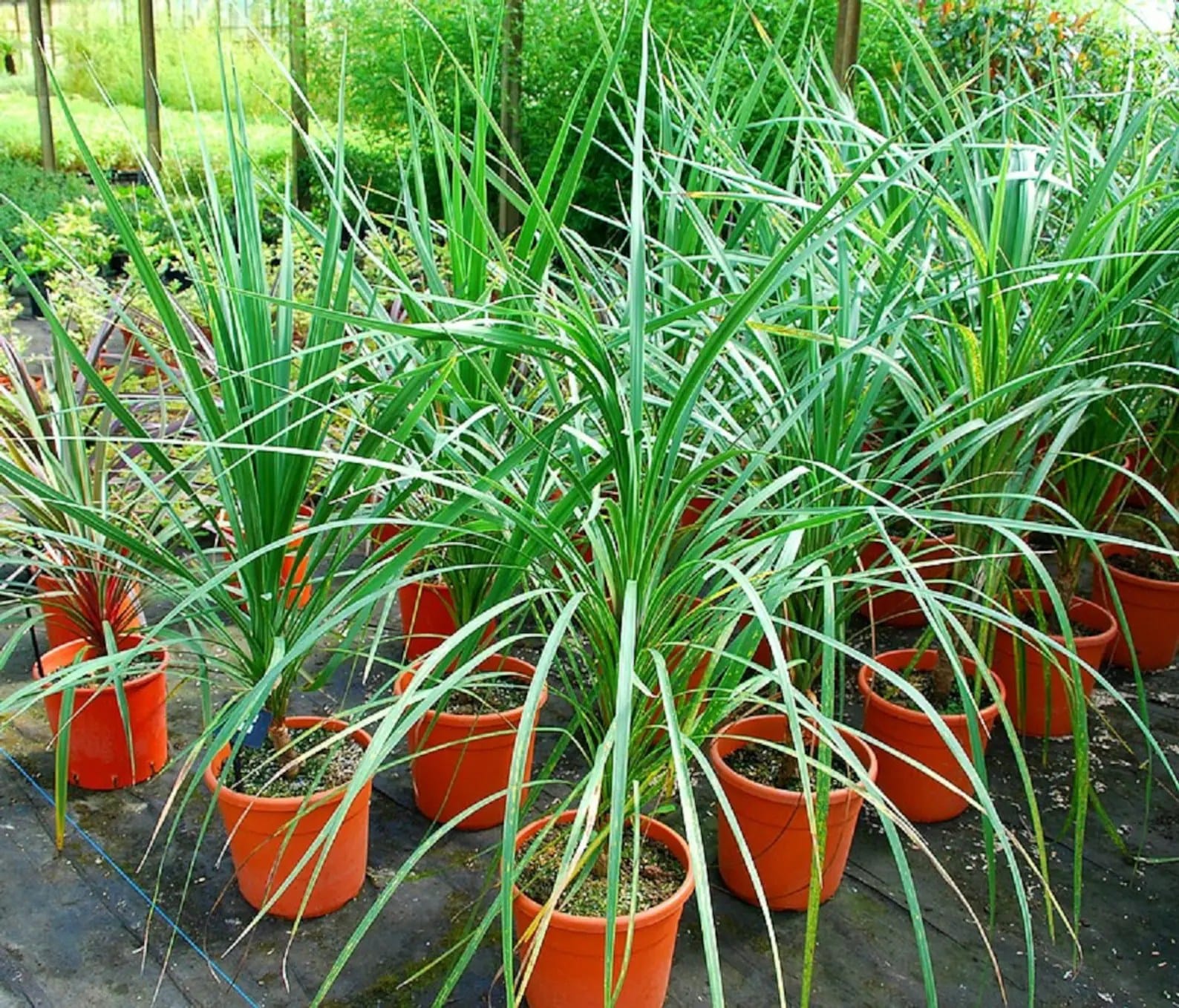Dracaena spikes (Dracaena indivisa) are versatile plants adaptable to indoor and outdoor environments, thriving with minimal care when provided the right conditions. This comprehensive guide covers everything you need to know, from choosing the right spot to troubleshooting common problems. Whether you’re a seasoned plant parent or just starting your green thumb journey, this guide will equip you with the knowledge to successfully cultivate these striking tropical plants. Delve into the enigmatic world of strangler figs, discover how ficus strangler figs dominate their surroundings with extraordinary vines.
Creating the Ideal Dracaena Spike Habitat
Mastering dracaena spike care involves understanding their need for bright, indirect light, well-draining soil, and consistent but infrequent watering. Recreating their natural environment, a warm, reasonably humid setting with dappled sunlight, is key to their success indoors or outdoors.
Light and Placement
- Indoors: Bright, indirect light is best. An east- or west-facing window usually provides the ideal balance. South-facing windows can also work but may require filtering the light with a sheer curtain to prevent leaf burn.
- Outdoors: In warmer climates, a partly shaded location mimics their natural habitat. Too much direct sunlight can scorch the leaves, while insufficient light may result in slower growth.
Soil and Drainage
Well-draining soil is crucial to prevent root rot, a common issue for dracaena spikes. A mix of regular potting soil, peat moss (for moisture retention), and perlite (for enhanced drainage) creates the perfect balance. Pre-mixed blends formulated for tropical plants are also readily available.
Watering
Dracaena spikes prefer their soil to dry out slightly between watering sessions. Overwatering is a much bigger problem than underwatering. A good rule of thumb is to insert your finger about an inch into the soil. If it feels dry, it’s time to water. If it’s still moist, wait a few more days.
Temperature and Humidity
These plants are surprisingly tolerant of temperature fluctuations, handling temperatures as low as 20°F (-7°C). However, they thrive in warmer temperatures between 65-75°F (18-24°C). Protect them from drafts and sudden temperature swings. While they tolerate average humidity, they appreciate a more humid environment. Misting regularly, placing the pot on a pebble tray filled with water, or utilizing a humidifier can help elevate humidity levels, especially during drier months.
Essential Dracaena Spike Care Practices
From propagation to overwintering, this guide unlocks the secrets to nurturing your dracaena spike through every season. Proper fertilization, pruning, and pest control are vital for long-term health and vibrancy.
Fertilizing
During the growing season (spring and summer), a balanced liquid fertilizer applied every 2-4 weeks provides the necessary nutrients for robust growth. You can use a general-purpose fertilizer or one specifically formulated for tropical plants. Always follow the instructions on the product label.
Pruning
While not strictly necessary, occasional pruning can help maintain the desired shape, remove damaged or yellowing leaves, and encourage bushier growth. Use clean, sharp pruning shears to make precise cuts.
Repotting
As your dracaena spike grows, it will eventually outgrow its pot. Repotting every 2-3 years, or when you notice roots circling the bottom or protruding from drainage holes, is recommended. Choose a slightly larger pot with drainage holes and use fresh potting mix.
Propagation
Easily propagate new dracaena spikes from stem cuttings. Cut a 4-6 inch stem section, allow the cut end to callous for a day or two, and then plant the cutting in moist potting mix or a glass of water. Be patient; root development takes time. New growth indicates successful rooting!
Troubleshooting Common Dracaena Spike Issues
Recognizing and Addressing Problems
| Problem | Likely Cause(s) | Solution(s) |
|---|---|---|
| Brown Leaf Tips | Usually underwatering or low humidity | Increase watering frequency. Mist the leaves regularly or use a humidity tray. |
| Yellow Leaves | Often overwatering or poor drainage | Allow the soil to dry out between waterings. Check the pot for drainage holes. Ensure the pot and soil are well-draining. |
| Pests | Susceptible to mealybugs and spider mites | Treat with an appropriate insecticide (neem oil or insecticidal soap are good options). Quarantine affected plants. |
Ongoing Research and Evolving Knowledge
While we understand much about dracaena spike care, ongoing research continuously refines our knowledge. Studies exploring soil composition, light optimization, and pest resilience may likely lead to even more effective care strategies. For example, some researchers suggest that the type of light (fluorescent vs. natural) might influence growth patterns.
Maximizing Your Dracaena Spike’s Lifespan
Maximize your dracaena spike’s lifespan with proper fertilization, pruning techniques, and pest control strategies for sustained health and vibrant foliage. By understanding its needs and observing its responses to its environment, you can ensure a long and prosperous life for your Dracaena spike, whether indoors or out. Explore the verdant expanse of green vase zelkovas, where graceful branches dance in harmony with the wind.
Is Dracaena Spike a Perennial?
The question of whether a Dracaena Spike (Cordyline indivisa) is a perennial is more nuanced than a simple yes or no. It depends largely on your climate. In warmer zones (USDA Hardiness Zones 7-11), it thrives as a perennial, returning year after year. However, in colder regions (Zone 6 and below), it’s typically grown as an annual due to its inability to tolerate freezing temperatures.
This plant is frequently misidentified as belonging to the Dracaena genus, adding to the confusion. Understanding that it’s actually a Cordyline is important for providing appropriate care. While both genera share similar care needs, Cordyline often have thicker, more fleshy roots.
Key Factors for Perennial Success:
- Well-draining soil: This is paramount, as soggy soil leads to root rot, a major threat to Dracaena Spike.
- Ample sunlight: While it tolerates some shade, providing at least six hours of sunlight encourages vigorous growth.
- Frost protection: In colder zones, mulching heavily or bringing the plant indoors during winter is essential for survival.
Even within recommended zones, microclimates can impact the plant’s longevity. Localized variations in temperature and exposure can create conditions where it might survive as a perennial in a slightly colder zone or struggle in a warmer one.
Is Dracaena Spike an Indoor Plant?
Absolutely! Dracaena Spike thrives indoors with proper care, adding a touch of tropical elegance to any space. While often associated with outdoor landscapes in warmer regions, its adaptability makes it a popular choice for brightening indoor environments, from small apartments to spacious homes.
Key Considerations for Indoor Success:
Light: Bright, indirect light is ideal. An east- or west-facing window typically provides the best exposure. If using a south-facing window, filter the light with a sheer curtain to prevent leaf burn.
Watering: Allow the top inch of soil to dry out between waterings. Overwatering can lead to root rot. Adjust the frequency based on the season; water less during the winter months.
Humidity: Dracaena Spikes prefer moderate humidity. If your indoor environment is dry, especially during winter, consider using a humidifier, placing the pot on a pebble tray filled with water, or grouping plants together.
Soil: Use a well-draining potting mix to promote healthy root development and prevent waterlogging.
Addressing Species Confusion: D. marginata vs. D. indivisa
A common point of confusion arises from the interchangeable use of “Dracaena Spike” to refer to both Dracaena marginata and Dracaena indivisa. While both can be grown indoors, D. marginata is more commonly cultivated as a houseplant. D. indivisa, sometimes called Giant Dracaena, can also adapt to indoor life but may require more space due to its larger size.
By understanding these key considerations, including the differences between D. marginata and D. indivisa, you can create a thriving indoor habitat for your Dracaena Spike and enjoy its striking foliage for years to come.
- SYBAU See You Baby Meaning: Gen Z Slang Evolves - July 1, 2025
- Unlock Your Inner Youth: Lifestyle Secrets for a Vibrant Life - July 1, 2025
- Decode SYBAU Meaning: Gen Z Slang Explained - July 1, 2025






